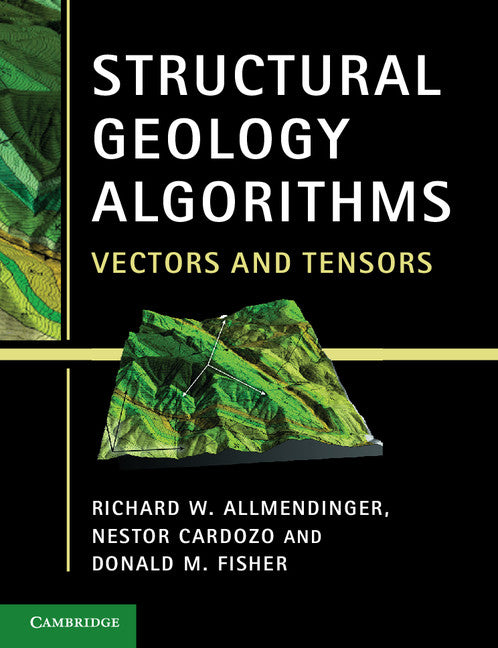Freshly Printed - allow 4 days lead
Couldn't load pickup availability
Structural Geology Algorithms
Vectors and Tensors
An innovative lab book providing a unified methodology for problem solving in structural geology using linear algebra and computation.
Richard W. Allmendinger (Author), Nestor Cardozo (Author), Donald M. Fisher (Author)
9781107401389, Cambridge University Press
Paperback / softback, published 1 December 2011
302 pages, 131 b/w illus. 15 tables 67 exercises
24.7 x 19 x 1.5 cm, 0.64 kg
'The book is suitable for numerate researchers and advanced undergraduates who are reasonably comfortable with mathematics … it is essential in the twenty-first century that we have numerate geoscientists trained in quantitative techniques of structural geology … The authors take care to describe the basics of tensor algebra as well as its application; this book is a solid foundation for understanding the mathematical analysis of how the Earth deforms.' John Wheeler, American Mineralogist
State-of-the-art analysis of geological structures has become increasingly quantitative but traditionally, graphical methods are used in teaching. This innovative lab book provides a unified methodology for problem-solving in structural geology using linear algebra and computation. Assuming only limited mathematical training, the book begins with classic orientation problems and progresses to more fundamental topics of stress, strain and error propagation. It introduces linear algebra methods as the foundation for understanding vectors and tensors, and demonstrates the application of geometry and kinematics in geoscience without requiring students to take a supplementary mathematics course. All algorithms are illustrated with a suite of online MATLAB functions, allowing users to modify the code to solve their own structural problems. Containing 20 worked examples and over 60 exercises, this is the ideal lab book for advanced undergraduates or beginning graduate students. It will also provide professional structural geologists with a valuable reference and refresher for calculations.
Preface
1. Problem solving in structural geology
2. Coordinate systems, scalars and vectors
3. Transformations of coordinate axes and vectors
4. Matrix operations and indicial notation
5. Tensors
6. Stress
7. Introduction to deformation
8. Infinitesimal strain
9. Finite strain
10. Progressive strain histories and kinematics
11. Velocity description of deformation
12. Error analysis
References
Index.
Subject Areas: Geology & the lithosphere [RBG], Earth sciences [RB], Earth sciences, geography, environment, planning [R]


